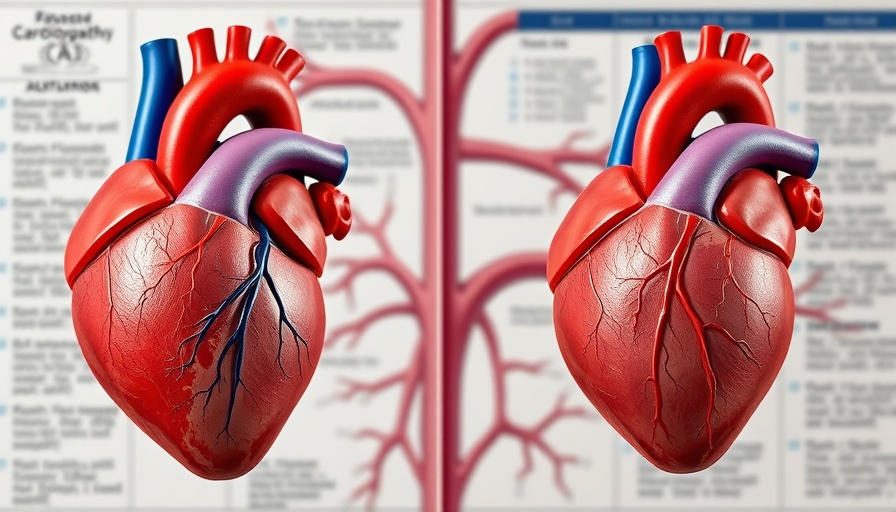
Takotsubo Cardiomyopathy: What It Is and Why You Should Care
Takotsubo cardiomyopathy, often dubbed "broken heart syndrome," is an increasingly diagnosed condition where stress leads to sudden, temporary heart muscle weakening. Initially thought to predominantly affect older women, recent studies suggest that men aged 35-55 may also face significant risks. This demographic, often engaged in high-stress professions or rigorous physical activities, should pay attention. Understanding this condition can help mitigate risks associated with it.
Rising Complications: A Growing Concern for Health Professionals
Recent reports indicate that hospitals across the United States are witnessing a disturbing rise in complications among patients with takotsubo cardiomyopathy. The primary concern here is that these complications often exacerbate existing health issues and lead to longer hospital stays. Such information is not just statistics; it's a call to action for men in the specified age group. Being aware of the condition and its complications can prompt proactive health measures.
Why Men Should Take This Seriously
Despite its name, takotsubo cardiomyopathy does not exclusively affect women. In fact, more men are being diagnosed, and its symptoms — chest pain, shortness of breath, and other cardiovascular challenges — can often be mistaken for typical heart issues. Men in their middle ages, especially those in demanding jobs or with high-stress lifestyles, need to recognize these signs and avoid downplaying them. Addressing heart health is not just about age; it's about lifestyle choices that can significantly influence well-being.
Actionable Insights for a Healthier Heart
Here are some practical steps for men to manage their heart health effectively:
- Incorporate Regular Exercise: Engaging in regular cardiovascular exercises can strengthen the heart and improve overall wellness. Aim for at least 150 minutes of moderate aerobic activity each week.
- Manage Stress: Techniques such as mindfulness, meditation, and yoga can help significantly lower stress levels. Consider integrating these practices into your daily routine.
- Stay Informed: Knowledge is power. Keeping abreast of health information and understanding conditions like takotsubo can empower you to make better health choices.
Understanding the Emotional Impact
It's essential to recognize the emotional weight this condition carries. The pressure to succeed in demanding careers can lead to heightened levels of stress, often manifesting in physical health issues like takotsubo cardiomyopathy. Taking a moment to reflect on the demands of work-life balance can not only benefit your heart health but can also promote overall mental wellness.
Future Predictions: Is It Becoming More Common?
Experts predict that as awareness around takotsubo cardiomyopathy grows, incidence rates may continue to increase, particularly among stressed-out professionals. As more men acknowledge their heart health, the healthcare community may adapt protocols to address this condition proactively. In your circles, fostering discussion around heart health can be a game-changer.
Combatting Myths Surrounding Heart Health
Many believe that heart conditions primarily afflict older individuals or those who lead sedentary lifestyles. However, recent findings debunk these myths, emphasizing that younger, physically active, and professionally engaged men can also be at risk. Staying informed can combat these misconceptions and empower men to prioritize their heart health.
Take Charge of Your Health Today
Empowering yourself with knowledge about conditions like takotsubo cardiomyopathy can lead to proactive choices regarding your health. Regular check-ups, a balanced lifestyle, and an open conversation with healthcare providers can make all the difference. Don’t wait until it’s too late; ensure you're leading a heart-healthy life.
Engaging with your health is just a conversation away. Talk to your doctor about heart health. Discover ways you can improve your life, enrich your routine, and support your heart today!
 Add Row
Add Row  Add
Add 




Write A Comment